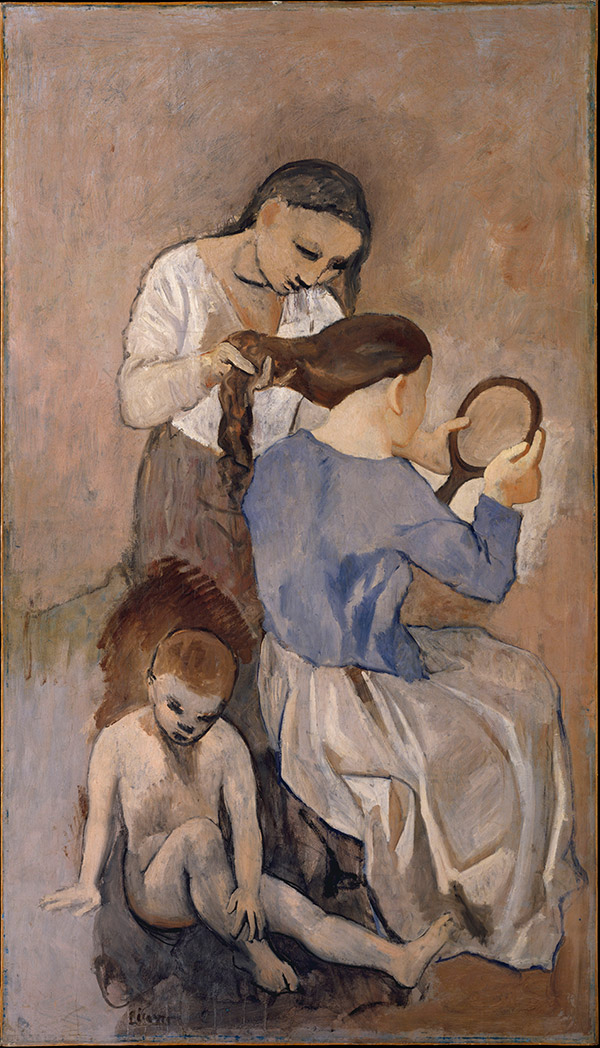The American Art Market in Wartime
Six months later, when Guernica returned to New York after its tour, war had begun in Europe and dealers were already feeling its effects; the New York art world was changing. For Dudensing this November was the first in four years that he did not present a Picasso show but his steadfast promotion of the artist had succeeded in creating a large and enthusiastic audience. That month Picasso’s works could be found instead at the Museum of Modern Art in a major retrospective arranged in collaboration with the Art Institute of Chicago.
An influx of dealers fleeing the Nazis meant that Dudensing now faced stiff competition both in obtaining and in selling modern art in New York. One recent arrival, Curt Valentin, came from Berlin and in 1938 opened the Buchholz Gallery at 32 East 57th Street. The similarity not only between their names—Valentine and Valentin—but also in the artists whose work they both carried caused confusion then as it continues to do today. Paul Rosenberg arrived from Paris in September 1940 with a large inventory of Picassos and opened his gallery the following year in the very rooms that the Valentine Gallery had just occupied at 16 East 57th Street. Dudensing moved the Valentine Gallery further east on 57th Street and, while he did include Picasso’s work in group shows in the years prior to the closing of his gallery, he never arranged another solo exhibition. Late in the spring of 1947, with no notice to the press, the Valentine Gallery closed and Dudensing and his wife moved to France where they spent the rest of their lives.
Today most people believe that Curt Valentin was the proprietor of the Valentine Gallery. To avoid confusion Valentin waited until several years after Dudensing had left New York before changing his gallery’s name from Buchholz to the Curt Valentin Gallery. While Dudensing’s name has been largely forgotten, the collectors to whom he sold works are responsible for laying the groundwork for public access to modern art in the U.S. Many either opened their own museums or bequeathed their collections to local institutions. As a result, a significant number of works that Dudensing selected and imported from Europe can be seen in American museums today—a silent but powerful legacy to his prescient recognition of the importance of Picasso and his work.
Picasso paintings imported and sold by Dudensing in the U.S., now in American Museums:
December 1928 – T. Catesby Jones – Woman with Kerchief, 1906 (Virginia Museum of Fine Arts, Richmond) [Z.I,319][i]
February 1929 – Ferdinand Howald – Boy with Cattle, 1906 (Columbus Museum of Art) [Z.I,338]
June 1929 – Duncan Phillips – Abstraction, Biarritz, 1918 (Phillips Collection, Washington, D.C.) [Z.III,162]
November 1930 – Stephen C. Clark – La Coiffure, 1906 (Metropolitan Museum of Art, New York) [Z.I,313]
January 1931 – A. E. Gallatin – Still Life with a Guitar and a Compote [The Mandolin], 1923 (Philadelphia Museum of Art) [Z.V,91]
February 1931 – Chester Dale – Family of Saltimbanques, 1905 (National Gallery of Art, Washington, D.C.) [Z.I,285]
December 1932 – Smith College Museum of Art – Table, Guitar and Bottle, 1919 (Smith College Museum of Art, Northampton, MA) [Z.III,437]
January 1934 – Robert H. Tannahill – Melancholy Woman, 1902 (Detroit Institute of Art) [Z.I,133]
January 1935 – Walter P. Chrysler, Jr. – The Studio, 1927-28 (Museum of Modern Art, New York) [Z.VII,142]November 1936 – Solomon R. Guggenheim – Accordionist, 1911 and Landscape at Céret, 1911 (Solomon R. Guggenheim Museum, New York) [Z.IIa,277 and Z.IIa,281]
December 1937 – Museum of Modern Art – Girl before a Mirror, 1932 (Museum of Modern Art, New York) [Z.VII,379]
January 1940 – Art Institute of Chicago – Head of a Woman, 1909 (Art Institute of Chicago) [Z.IIa,167]
January 1942 – Albright Art Museum – Harlequin [Project for a Monument], 1935 (Albright-Knox Art Gallery, Buffalo) [not in Zervos; RCA1941:23]
April 1943 – Anonymous – Glass of Absinthe and Cigarette, 1914 (Fogg Art Museum, Harvard University, Cambridge) [Z.IIb,474]
January 1945 – Samuel S. White – Still Life with Bottle, Newspaper, Glass, 1914 (Philadelphia Museum of Art) [not in Zervos: PMA 1967-30-70]
[i] This list represents: the date of sale, buyer’s name, title and date of work, current museum collection, and Zervos catalogue number.





 índice
índice